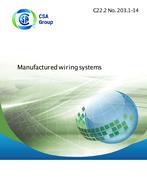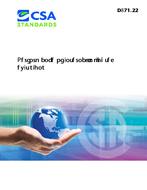Click here to purchase
Scope
1.1
This Standard specifies minimum requirements for processes and procedures connected with the deconstruction of buildings. It is intended for use by contractors, consultants, designers, building owners, regulators, and material supply and value chain organizations involved in deconstruction of a building that is at the end of its life or when it is undergoing renovations or alterations.
1.2
This Standard applies to existing buildings where deconstruction is to be considered as a means to reconfigure, remove, or partially remove an existing building.
Note: See Clause 4.2.1 for typical materials, components, products, and systems included in the scope of deconstruction projects.
1.3
This Standard does not specifically address
(a) landscaping (e.g., trees and other plantings, soils, and surface toppings);
(b) civil structures and works not attached to the building (e.g., roads, surface parking lots, runways, bridges, docks, transmission towers, water towers, cranes, and gantries);
(c) utility structures (e.g., effluent treatment plants, water purification plants, electrical substations, and electrical generating plants); and
(d) process or manufacturing equipment related to the previous use of the building.
Note: Although these topics are not specifically addressed by the Standard, deconstruction principles may be applied to them.
1.4
This Standard does not address procedures for assessing the suitability of deconstruction components or materials for reuse in another application.
1.5
This Standard does not address health and safety requirements.
Note: Although the need for health and safety provisions is highlighted in specific clauses of this Standard, health and safety regulations are controlled by the authority having jurisdiction.
1.6
In CSA standards, “shall” is used to express a requirement, i.e., a provision that the user is obliged to satisfy in order to comply with the standard; “should” is used to express a recommendation or that which is advised but not required; and “may” is used to express an option or that which is permissible within the limits of the standard.
Notes accompanying clauses do not include requirements or alternative requirements; the purpose of a note accompanying a clause is to separate from the text explanatory or informative material.
Notes to tables and figures are considered part of the table or figure and may be written as requirements.
Annexes are designated normative (mandatory) or informative (nonmandatory) to define their application.
Product Details
- Edition:
- 1st
- Published:
- 03/07/2012
- ISBN(s):
- 9781554917032
- Number of Pages:
- 52
- File Size:
- 1 file , 880 KB
- Product Code(s):
- 2421781, 2421920, 2421781


